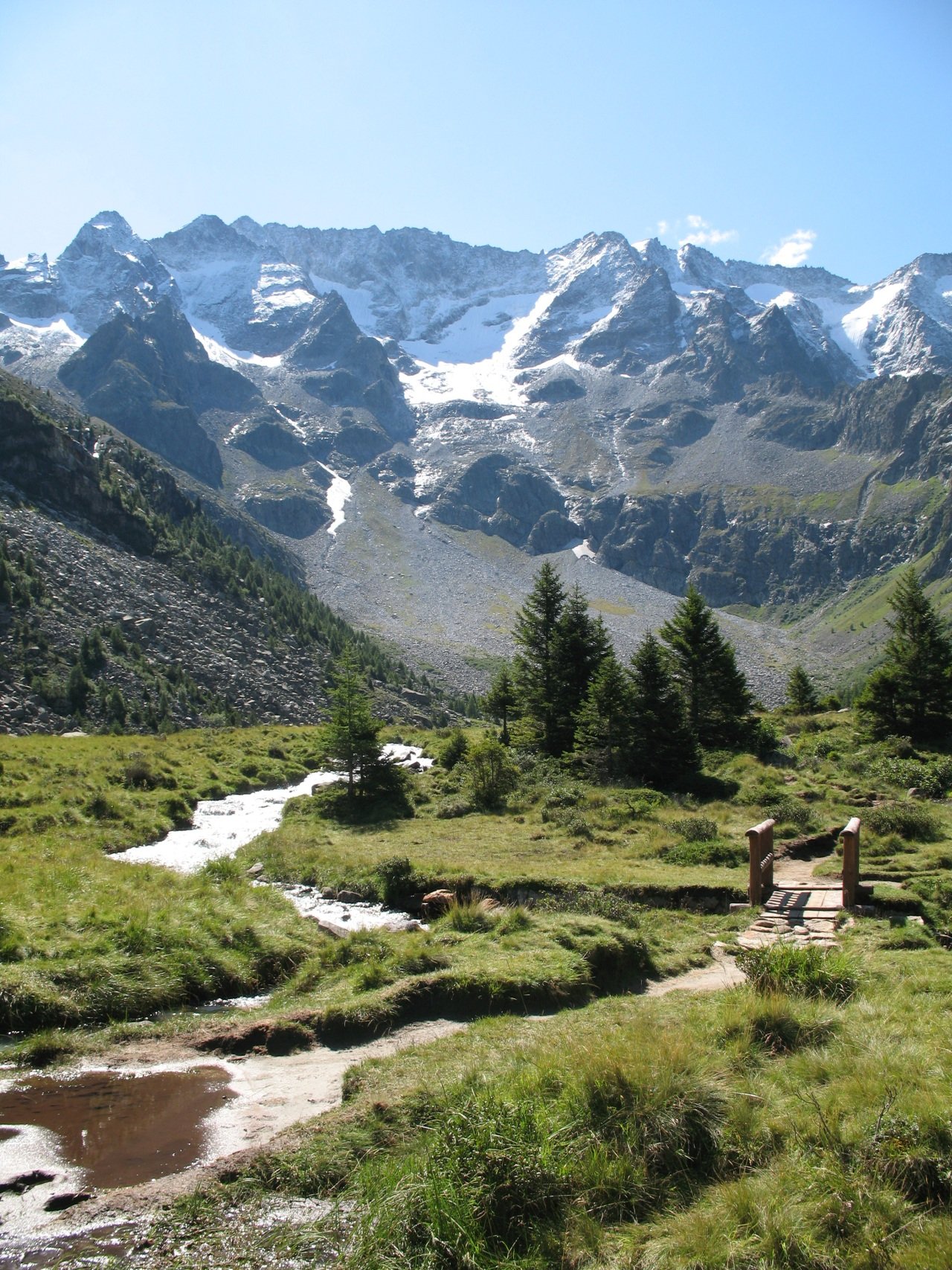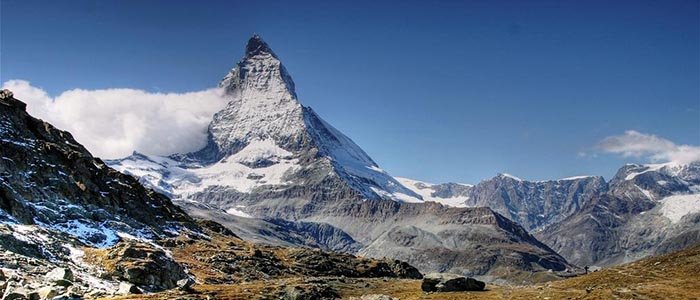Alps, Himalayas, Andes
Geology
Many mountain ranges display the dramatic uplift and erosion that took place at the end of the Genesis Flood.
Overview
Alps
Himilayas
While Maria Von Trapp and the Von Trapp children sang of the hills (the Alps) being alive with music in The Sound of Music, the great mountain ranges of which they sang are also "alive" with remnants from the global Flood that once covered even the highest peaks. Other great mountain ranges such as the Himalayas and Andes also display the dramatic uplift and erosion that took place at the end of the Genesis Flood. A trip to one of these awe-inspiring destinations is sure to bring a renewed sense of wonder for the God of the universe who caused valleys to sink and mountains to rise as described in Psalm 104.
How did these mountains form? Catastrophic plate tectonics proposes that the continents were dragged around at speeds of several feet-per-second by the rapidly moving plates during the Flood. When continents collided, mountain belts like the Alps and Himalayas were thrown up as the earth´s crust buckled and warped, causing huge slabs of crust to rise over the top of other rocks. In the Himalayas, you can also see evidence of catastrophic erosion as the Flood waters rapidly ran off the emerging mountains.
Be sure to read up on catastrophic plate tectonics and Flood geology before making a trip to one of these majestic mountain ranges. You´ll have a better understanding of how these mountains formed at the end of the Flood.
Andes
Points of Interest
Amazing Alps
Among the European Alps you can see whole mountains that have slid sideways as a result of massive earth movements during the late stages of the Flood. Stretching from Austria and Slovenia in the east and extending through Italy, Switzerland, Liechtenstein, Germany, and on to France, these mountain ranges offer interesting geological features, as well as popular destinations for winter sports, and hiking and mountain biking in the summer.

High in the Himalayas
If you are looking for an extreme mountaintop experience, the Himalayas might just be your place. This mountain range includes the world's highest peaks, one of which is Mount Everest. These mountains, which extend across Afghanistan, Bhutan, China, India, Nepal, and Pakistan, include over 100 mountains that exceed 23,622 feet (7200 m) and encompasses about 15,000 glaciers. The Himalayas were likely formed by two giant landmasses colliding late in the Flood.

Sea Creatures in High and Dry Places
Fossil ammonites (coiled marine cephalopods) have been found in limestone beds high in the Himalayas of Nepal. How did marine fossils get to the top of the world's largest mountain range at 29,029 feet (8848 m) above sea level? The rock layers in the Himalayas and other mountain ranges around the world were deposited during the Flood before they were pushed up by earth movements to their present high elevations at the end of the Flood.

Helpful Tips
- For information on the Alps, visit http://www.thealps.com/.
- For information on the Himalayas, visit http://www.travel-himalayas.com/.
- For information on the Andes, visit http://en.wikipedia.org/wiki/Andes.
Recommended Resources

Answers in Genesis is an apologetics ministry, dedicated to helping Christians defend their faith and proclaim the good news of Jesus Christ.
- Customer Service 800.778.3390
- © 2024 Answers in Genesis



